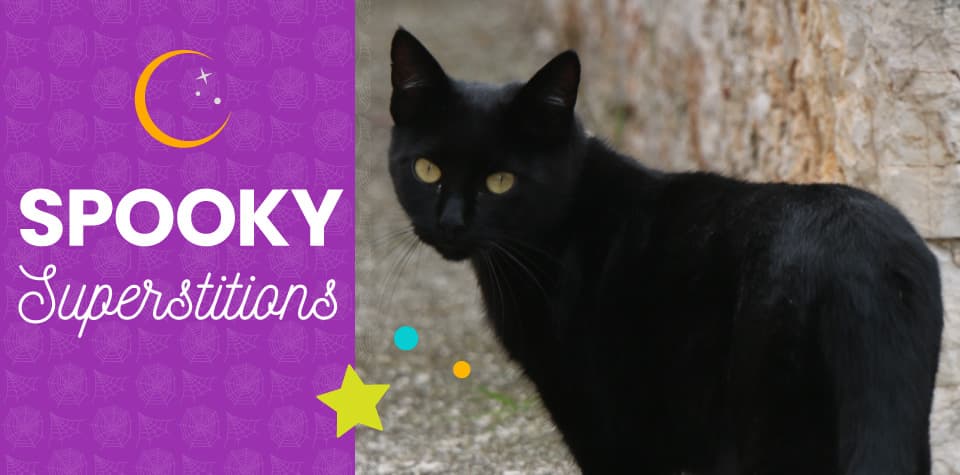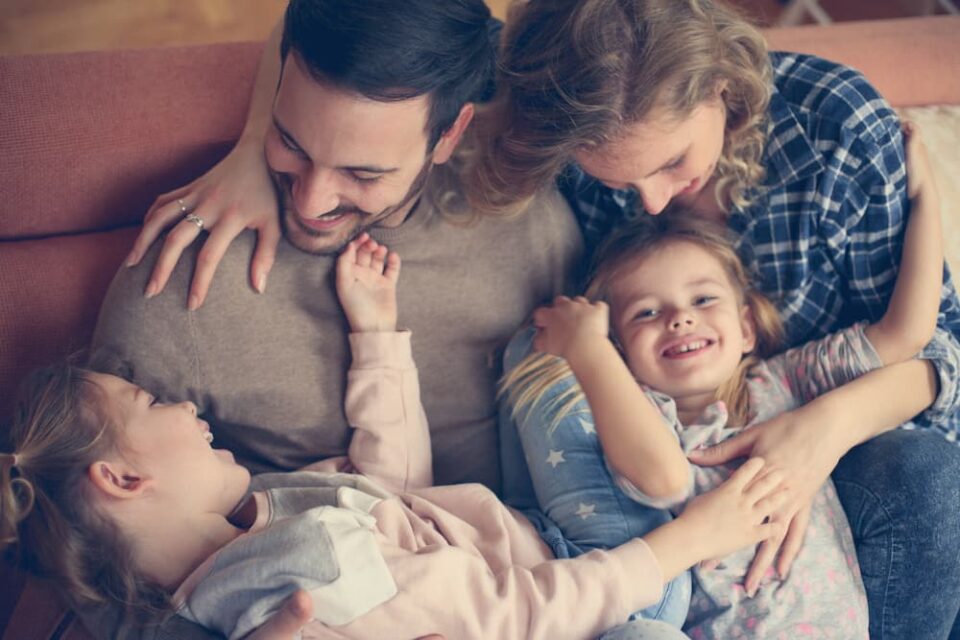
15 Spooky Superstitions to Put You in the Halloween Spirit!
Halloween night puts many people in a superstitious state of mind. Maybe it’s the cool weather, the lengthening nights, dying leaves and bare branches, or the mist hovering in graveyards. Maybe it’s the way Halloween is associated with ghosts, ghouls, and the supernatural. Or maybe it’s the holiday’s spooky stories and legends, handed down through families and cultures from generation to generation. Something about late October brings to mind the strange little rules we learn as kids—not breaking mirrors, avoiding black cats and unlucky numbers, and making special gestures so as not to attract bad luck.
There are many superstitions around the world, and they take shape in a variety of ways. Some have their roots in religious stories. Others were born of quirks of language or once-important safety practices that no longer make sense in the modern world. Whether or not they really work, superstitions linger in our minds because we learn them from our parents and communities as children, right alongside advice like “Look both ways before crossing the road,” “Don’t run with scissors,” and “Don’t touch a hot stove.”
So as you get ready for Halloween, dig into our guide to spooky superstitions. We’ve got explanations of some you’re probably familiar with as well as a list of others you might never have heard of, and even some tips on creating your own just for fun.

What Things Are Seen as Superstitions?
Superstitions vary from culture to culture. A number associated with bad luck in one country might be associated with good fortune in another, or a color that reminds people of death in one place might be a symbol of peace and hope a few thousand miles away. But across cultures, there are some similarities.
Common superstitions include lucky and unlucky numbers, colors that should be worn or displayed at home during certain times of the year, gestures that ward off evil, items that bring good luck if placed in a particular place or worn somewhere on the body, and animals that bring good or bad luck. We’ve listed a few examples below.
Black Cats
Black cats are one of the most prominent Halloween superstitions. Many people think that if a black cat crosses your path, you’ll have bad luck. But a black cat you know sitting on your lap, snuggling and purring, doesn’t seem threatening. So why the superstition? Where did it come from?
There are superstitions about black cats around the world, coming from a variety of sources. But in Western countries, the belief comes from religion. In the 13th century, Pope Gregory IX kicked off an era of witch hunting in Europe. Black cats were among the things he described as being indicators of the presence of witchcraft. The idea that witches could be living in their communities and causing harm terrified Europeans for centuries, so a black cat—particularly one they didn’t know—crossing their path was a truly frightening sight!
The Number Four
The number four isn’t seen as particularly noteworthy in many countries, but in Japan it’s a spooky one. One way to pronounce “four” in Japanese, “shi,” sounds the same as saying death.
For that reason, many people in Japan find the number four unnerving. Japanese builders often skip the number four when assigning numbers to floors (meaning you go straight from the third floor to the fifth floor, so nobody has to live, work, or sleep on a spooky fourth floor). And when giving gifts, people avoid giving four presents so that they don’t accidentally pass on bad luck.
Upside-Down Shoes

In Egypt, there’s a taboo against leaving shoes upside down in your home, because then their soles face upward, toward God. The tradition likely comes from a belief common throughout the Middle East that showing someone the soles of your shoes, which are dirty from walking in the street, means you’re deliberately insulting them.
So, to avoid inviting divine wrath into their homes, many people in Egypt are careful to place shoes right side up when taking them off, and to make sure they stay that way throughout the day.
Bad-Luck White
At a Western wedding, the bride often wears a white dress, but in China that would be a ghastly mistake. In China, the color white is associated with death, mourning, sorrow, and grief—the opposite of anyone’s hopes for a new couple! Instead, Chinese weddings are saturated with the color red, which is considered to bring good fortune.
Golden Good-Luck Undies
We were going to stick with four superstitions here, but the Japanese tradition spooked us, so we’re adding a fifth for good luck.
Many people around the world have a special pair of good-luck underwear, a secret charm to make the day go better when it really counts. And in Chile, it’s widely believed that wearing yellow underwear on New Year’s Eve brings good fortune.
No one knows exactly where the tradition comes from, but it could be that yellow is associated with gold and material wealth, or that it represents the sun and being filled with energy. Either way, the tradition is so widespread in Chile that as New Year’s Eve approaches, many vendors there spread their tables with yellow underwear so that passersby can buy a fresh pair for the big night.
Spooky Superstitions
Looking for more spooky superstitions to add a little shiver to your Halloween traditions? Here are ten more you might not know about.
- If you eat from a knife, you’ll be mad and angry for life, according to one grim superstition. This one doubles as useful safety advice!
- Never kill spiders in the house. Even if you find them scary, their appearance means that something’s about to happen. In other words, don’t kill the messenger that came to you on its four pairs of legs!
- There’s an old tale that if you have a wart, you should rub a beefsteak against it and then bury the meat to get rid of it.
- Back in the old days, when doctors were in short supply and even more expensive than they are today, there was a superstition that, if bitten by a dog, you should rub its fur against the wound or even eat the fur to prevent an infection.
- Don’t put your hat on the bed! People used to believe that evil spirits lived in a person’s hair, so putting your hat where you slept wasn’t such a good idea.
- Don’t whistle at home, or you won’t have any money.
- Here’s another one about money. If you step in dog poop, or a pigeon leaves a smelly mark on your car, count yourself lucky and soon to be rich!
- A pretty morbid superstition comes from Cornwall in England. When eating a yummy Cornish pasty (a folded pastry with meat and vegetables inside), don’t forget to throw its end away to the “knockers,” mischievous spirits that live in the mines!
- Needles and pins always cause trouble. If someone decides to mend a hole on your shirt while you’re wearing it, make sure to chew on a piece of thread while they do.
- And last but not least, if you ever want to get married, don’t sit at the corner of a table or allow anyone to sweep around you. Bad, bad, bad luck!
So Where Do Superstitions Come From?
In the end, superstitions come from human nature. If you look at many of the superstitions on our list—or others around the world—you’ll notice that they tend to have something in common: they give people a way of understanding and avoiding danger.
The world can be a frightening place, and some of its scariest things can seem impossible to predict or explain. One of the ways people everywhere protect each other is to band together in families and communities to share knowledge about how to live a long, happy life.
The Joy of Superstitions

Superstitions don’t always have to be spooky or scary. Like the Chilean good-luck undies tradition, some of them are a lot of fun! You can practice sharing special knowledge by creating your own superstitions for your family anytime you want. Here are a few suggestions to get started:
- Ask the kids to remember the last time something really wonderful happened to them, like receiving an unexpected gift from a relative. What were they wearing? Maybe it brought good luck!
- Tell your kids a story from your own childhood about something that brought you good fortune. Did you have a special ritual you used to do before a test or a sports competition? Were you wearing a particular item of clothing when you got your first dog or met your best friend? Did you ever touch something for good luck when you needed it? Maybe your kids will try doing it too!
- Come up with a special meal to eat before or after an important event or a difficult challenge. It could be that eating a favorite breakfast cereal will make for a better day at school. Or maybe eating ice cream after getting a shot means your arm won’t get sore!
Looking for more fun things to do on Halloween? Try our tips to make a spooky watermelon brain for a fun, edible Halloween decoration. Or get ready for a Halloween party by making a DIY pumpkin T-shirt. And before you head out on the big night itself, investigate trick-or-treating traditions from around the globe and see how it’s done in other countries!
Did your kids enjoy learning about global spooky superstitions? Check out our World Edition subscription box for kids and discover more of the world we share through hands-on activities, adventurous stories, and engaging souvenirs from around the planet.

